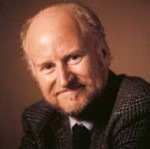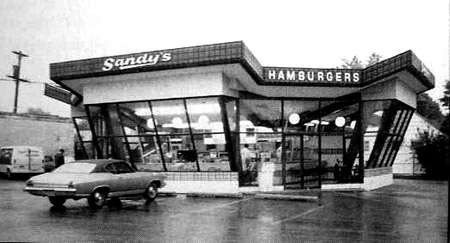Let’s talk about today’s Word on the Street column:
Critics of publicly financing a Downtown hotel have linked last year’s City Council vote to extend $39.3 million in bonds for the $102 million Marriott with this year’s budget reduction decisions.
Some council members are fighting back, saying the criticism is unfair and inaccurate. They say the bond issue for the hotel project has nothing to do with next year’s budget deficit, or with the budget in general.
This ought to be good. I can’t wait to hear how $39.3 million has nothing to do with the budget.
“There is a misperception being promoted that the city has $39 million in the bank and is giving it away to a private developer when that is just not the case,” at-large City Councilman Ryan Spain said.
Oh, no. I know the city doesn’t have $39 million in the bank. That’s precisely the point. The city is going to have to go $39 million in debt to give $39 million away to a private developer.
At-large City Councilman Eric Turner agreed. “It doesn’t impact anything,” he said.
By “anything” here, I’m assuming he meant it in the context of the 2010 budget. And this may shock you, but I don’t disagree with him in that assessment. It won’t impact anything in 2010. But it will certainly impact the budget in 2012 and beyond. But I suppose that’s irrelevant, eh? Why look past the end of your nose when making decisions, right?
Linking this year’s deficit-related decisions, such as cutting police officers, with last year’s hotel project vote has been done at times during council meetings and on blogs.
He’s talking about me here, in case you didn’t catch it.
At-large City Councilman Gary Sandberg has brought up the issue before, saying the priorities of the council are screwed up. He said he has received calls from constituents concerned with why the city is assisting a developer build a hotel at a time when police officers may be laid off.
If the city wanted to assist the developer by improving public infrastructure around the site, that would be one thing. It’s quite another thing to just hand over cold hard cash to a developer to help him construct his project.
At issue is the city’s public financing portion of the project.
The city’s bond will be paid back through revenues generated by the project, including tax-increment financing and additional hotel, restaurant and sales taxes it generates.
“Revenues generated by the project.” That assumes revenues will be generated, which is a point of contention. Private banks, whose loans would have to be repaid through revenues generated by the project, have not been willing to loan the developer the money he needs to start the project, despite all this backing from the city. What do they know that the city doesn’t? Or is it just that the city is content to take higher risks with taxpayer money than banks are willing to take with their private funds?
Also, not explicitly mentioned in this statement is the fact that the council raised sales taxes 1% within the Hospitality Improvement Zone. Why was this necessary if “revenues generated by the project” are sufficient to pay back the bonds?
Projections show the city is to owe $2.5 million in 2012, the year the hotel is anticipated to open. The opening date likely will be pushed back because of delays in moving the project forward.
Not mentioned is the reason for the delays: inability to get private financing.
If the revenue from the project doesn’t materialize as anticipated, it is possible the city can make its bond payments from revenues from adjoining tax-increment financing districts (the hotel project is located within a TIF district, a key economic incentive device allowing the project to potentially happen).
City officials have estimated that about half of the $39.3 million can be raised from three adjoining TIF districts and directed to a fund that is separate from the city’s general operations fund, which pays for police, firefighters and other services.
If other TIFs are so flush with cash, why don’t they use that money to retire those TIF bonds early so the tax revenue go into the city’s general operations fund where they could pay for “police, firefighters and other services”? Wouldn’t that be a better use for those funds than on a hotel?
Recently retired Economic Development Director Craig Hullinger said the project “shouldn’t have a negative impact on the budget. It creates jobs and a tax base. That’s the logic for doing this.”
That’s what they said about MidTown Plaza.
Spain said the timing is right for the project. The hotel, when completed, would connect to the Civic Center via a skywalk.
And that’s relevant because…? I’m unclear whether these are just two disjointed statements the reporter decided to put in this paragraph, or if he’s implying that the skywalk was Spain’s justification for “the timing [being] right for the project.” If the latter, I have to believe there was more to his reasoning than what was reported. No one would say that a skywalk is justification for giving a developer $39.3 million in tax money. No one would be that foolish.
Project naysayers may have another chance to publicly sway the project. If developer Gary Matthews gets the financing needed to proceed, then the council will have to vote on the sale of bonds in order to officially participate in the financing of the project.
Matthews is still attempting to secure the private financing to begin a project that was originally supposed to start last spring. A national economic recession, though, has slowed the progress. (J.S.)
Yes, the recession is slowed progress, because the economic climate makes this project too risky for credit markets. But not too risky for our tax dollars, according to Mr. Spain and Mr. Turner. After all, we won’t have to pay the piper for several years, so it’s all good.
 On the PBS Newshour Wednesday, they did a segment on Rocco Landesman, National Endowment for the Arts chair. You may remember that he made some disparaging remarks about Peoria, then visited Peoria last November. During the PBS news segment, there’s footage from his Peoria visit as well as his explanation/apology for the disparaging comments he had made earlier:
On the PBS Newshour Wednesday, they did a segment on Rocco Landesman, National Endowment for the Arts chair. You may remember that he made some disparaging remarks about Peoria, then visited Peoria last November. During the PBS news segment, there’s footage from his Peoria visit as well as his explanation/apology for the disparaging comments he had made earlier:
 It was back in 2007 that we first started talking about Amtrak and IDOT doing a feasibility study on a possible Chicago-Peoria route. The study was going to be completed by late 2007, then early 2008. Then there were a number of delays. By the end of 2008, Amtrak/IDOT officials were promising it would be done by March 2009. Then they pushed it back to “summer.” Now we’ve been informed that the Amtrak study has been pushed back to “at least” this fall.
It was back in 2007 that we first started talking about Amtrak and IDOT doing a feasibility study on a possible Chicago-Peoria route. The study was going to be completed by late 2007, then early 2008. Then there were a number of delays. By the end of 2008, Amtrak/IDOT officials were promising it would be done by March 2009. Then they pushed it back to “summer.” Now we’ve been informed that the Amtrak study has been pushed back to “at least” this fall.